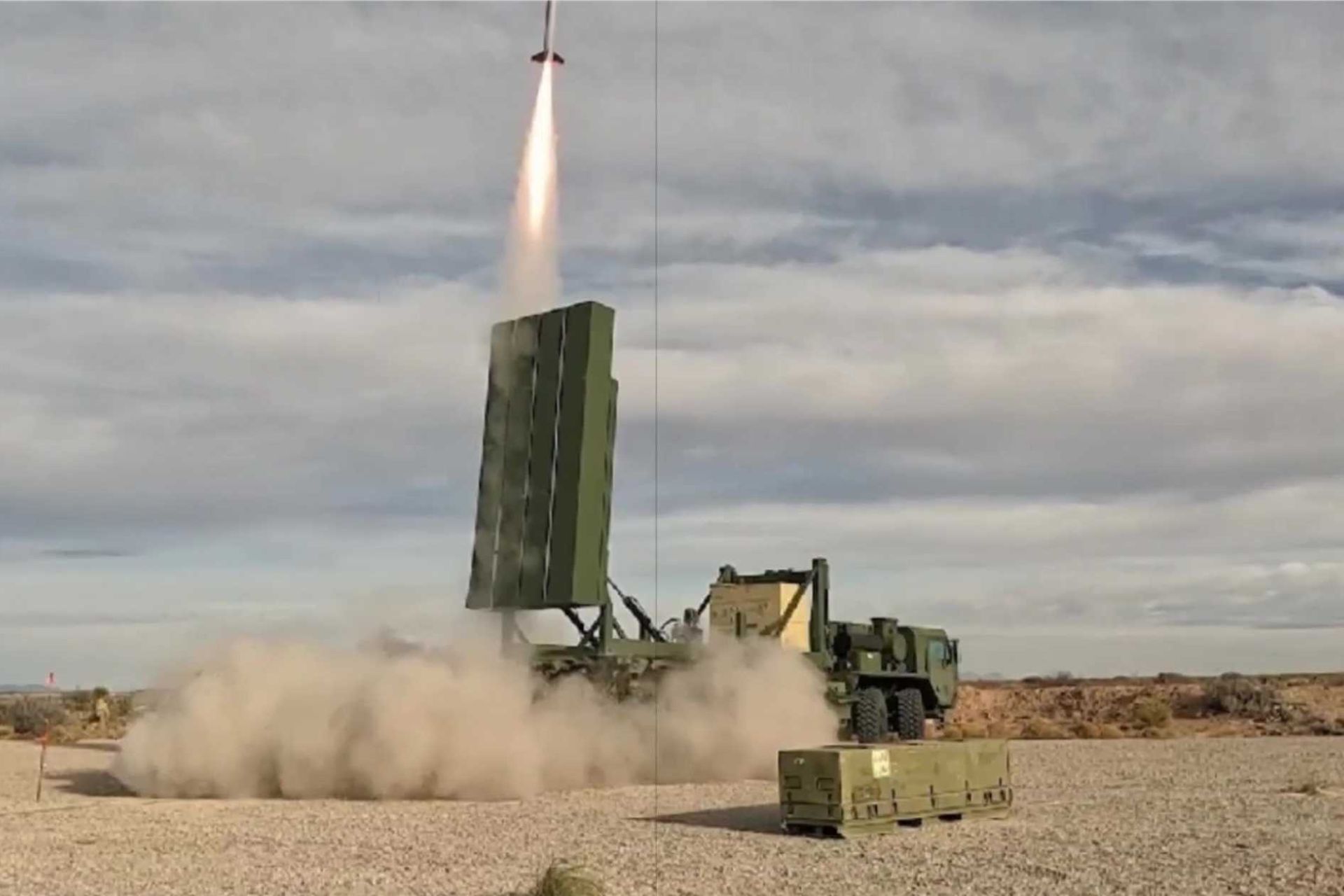Breaking News
Exclusive Report: U.S. Army to turn HIMARS Rocket Launcher into hypersonic strike system with Blackbeard GL missile.
In June 2025, the U.S. Army initiated a transformative leap in artillery modernization with the funding and technical development of the Blackbeard Ground Launch (GL) hypersonic missile, intended for integration into the M142 High Mobility Artillery Rocket System (HIMARS). Developed by Castelion Corporation, a defense startup founded by former SpaceX engineers, Blackbeard GL is designed to provide the U.S. military with a cost-effective, fast-response precision strike capability over distances of up to 800 kilometers. This effort marks a significant evolution in tactical fires doctrine, merging the mobility and versatility of HIMARS with the lethal speed and survivability of hypersonic technology.
Follow Army Recognition on Google News at this link

Live firing test of the Blackbeard GL hypersonic missile developed for launch from the U.S. Army HIMARS rocket launcher system. (Picture source: U.S. DoD)
Technically, the Blackbeard GL is engineered to fill a critical operational gap between traditional rocket artillery and strategic hypersonic weapons such as the Long Range Hypersonic Weapon (LRHW). While the LRHW offers strategic range and deep-strike capability, it comes with high logistical requirements and limited deployability. In contrast, Blackbeard GL focuses on mid-range missions with a design optimized for rapid production, reduced cost, and seamless compatibility with HIMARS and M270 launch systems. Encapsulated within a modified Multiple Launch Rocket System Family of Munitions (MFOM) pod, it requires no structural changes to existing launch platforms, enabling rapid fielding and integration into current artillery units.
The missile’s defining attribute is its hypersonic speed, exceeding Mach 5, which offers several battlefield advantages over conventional HIMARS munitions like GMLRS and even the Precision Strike Missile (PrSM) Increment 1 and 2. The extreme velocity of Blackbeard GL compresses the engagement timeline, allowing it to strike time-sensitive and mobile targets before they can relocate or activate countermeasures. Its speed also enhances survivability, as intercepting a maneuvering hypersonic missile traveling at such velocities remains a formidable challenge even for advanced air defense systems. Moreover, the missile employs seeker-based terminal guidance, enabling it to accurately engage moving and hardened targets in GPS-contested environments, which are increasingly likely in peer-conflict scenarios.
In terms of performance, Blackbeard GL aims to deliver approximately 80 percent of the anticipated capabilities of the future PrSM Increment 4, which itself is expected to reach ranges up to 1,000 kilometers through advanced propulsion such as ramjets. Although Blackbeard does not use air-breathing engines, it achieves its performance through a high-efficiency boost system and aerodynamic design tailored for sustained hypersonic flight. This gives it a realistic range of approximately 800 kilometers, providing commanders with a responsive and flexible strike option deep into contested territory.
From a development standpoint, the U.S. Army has designated the Blackbeard GL effort under the Middle Tier of Acquisition for Rapid Prototyping (MTA-RP), with $25 million allocated in the FY2026 budget. The missile is being advanced under a Fixed-Firm-Price Other Transaction Authority for Prototyping (OTAP) with Castelion, a non-traditional defense contractor that emphasizes modern manufacturing techniques, digital engineering, and rapid iterative design. Castelion has already secured over $100 million in private investment and military contracts, reflecting growing confidence in its approach to delivering scalable hypersonic capability.
One of the most strategic aspects of Blackbeard GL’s integration into HIMARS lies in its cost-effectiveness. Hypersonic weapons have traditionally been prohibitively expensive, limiting their operational use. By focusing on affordability and manufacturability, Blackbeard GL aims to deliver high-performance effects at a price point that enables broader deployment. This unlocks the potential for HIMARS units already widely used in the U.S. and among allied forces to deliver hypersonic effects without transitioning to a new generation of launch platforms or altering force structure.
Operationally, the ability to fire a hypersonic missile from HIMARS redefines the launcher’s mission profile. While current munitions like GMLRS and early PrSM variants are highly effective, they lack the speed and target survivability suppression offered by Blackbeard GL. The new missile’s speed drastically reduces enemy reaction time, enhances precision against moving targets, and enables deeper strikes from safer standoff distances. It also introduces a level of lethality and versatility that aligns with multi-domain operations and future concepts of maneuver warfare, where fast, flexible, and distributed fires are crucial to breaking through enemy anti-access and area denial systems.
Ultimately, the Blackbeard GL represents more than just a missile. It is a strategic enabler that transforms existing platforms like the U.S. HIMARS rocket launcher vehicle into next-generation artillery systems capable of delivering hypersonic strikes from the tactical edge. If successful, this capability will ensure that frontline forces have access to the kind of rapid, precise, and survivable firepower that was once the domain of strategic forces alone. The program’s success could reshape how the U.S. Army conducts long-range fires and maintain dominance in increasingly contested theaters.


























